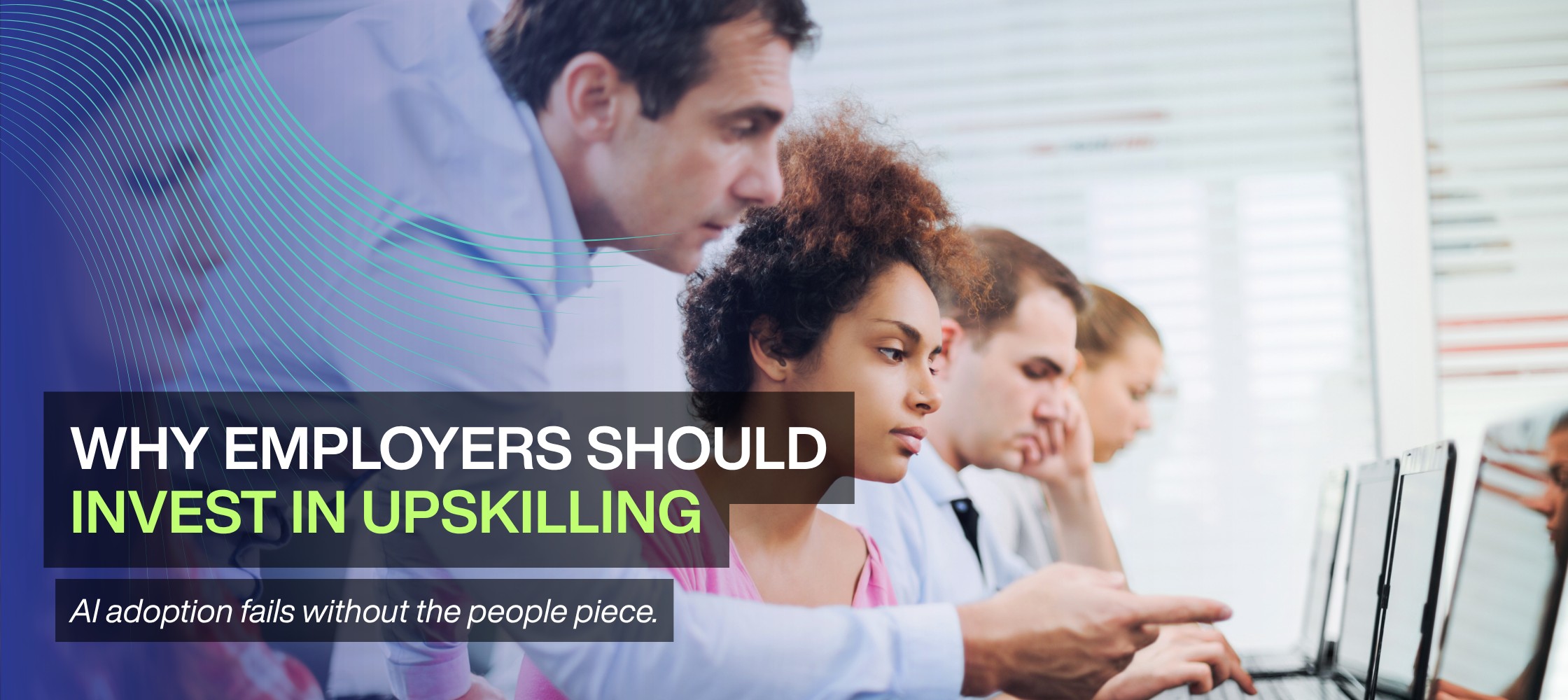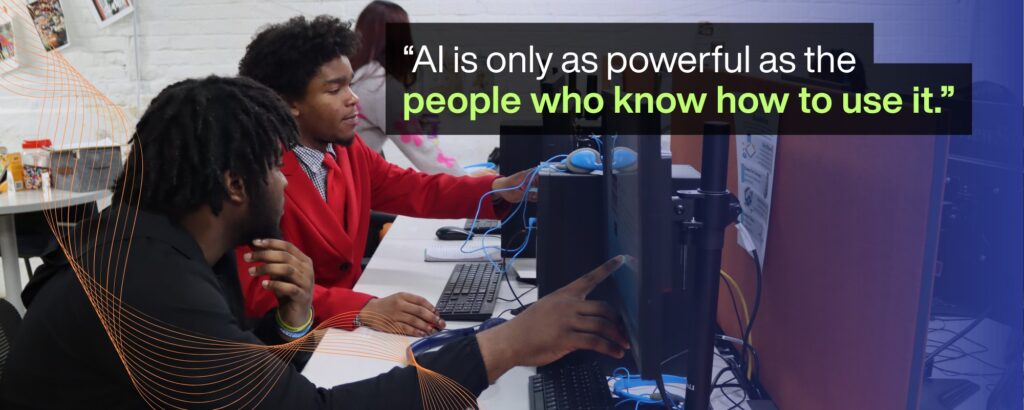
You wouldn’t buy a fleet of Ferraris and skip the driving lessons.
But that’s exactly what many companies are doing with AI.
They’re investing in powerful new tools—enterprise licenses for ChatGPT, intelligent CRMs, custom copilots—but leaving employees to figure them out on their own. The result? Missed potential, uneven adoption, and a workforce stuck doing work the old way while leadership bets the future on transformation.
Here’s the truth: AI is only as powerful as the people who know how to use it. And right now, most teams are flying blind.

AI adoption in business isn’t a single switch—it’s a long arc, unfolding in stages. Each stage can unlock new value, but only if employees are trained and supported. Otherwise, companies stall out.
Stage 1: The Side Door (ChatGPT Experiments)
It usually begins quietly: an employee pastes a draft email into ChatGPT. Someone else asks it to summarize an article. Marketing tests it for copy. These early wins show the promise—but they’re ad hoc, ungoverned, and often discouraged by leadership. In fact, surveys show 40% of U.S. employees are already using AI at work—most without training or guardrails.
Stage 2: Custom GPTs + Guardrails
Leaders take notice. They roll out company-sanctioned GPTs with curated documents and prompt guidelines. Now teams have safer, shared spaces to experiment. But unless employees are trained to use them effectively, usage stays shallow—like owning a Ferrari but never leaving first gear.
Stage 3: Unlocking Proprietary Knowledge (RAGbots)
This is where it gets transformational. Retrieval-Augmented Generation—or RAG—means giving AI a company’s own knowledge base to work with. Think of it like giving AI a library card to your private archives. Suddenly, departments can query their own data: sales can pull instant insights from CRM notes, HR can surface policy answers, operations can optimize workflows. But here, the gap widens: employees who know how to prompt well soar, while others get left behind.
Stage 4: Agentics—the Digital Workforce
The frontier is agentic systems: companies digitizing their unique processes, skills, and playbooks into fleets of AI “agents.” These aren’t chatbots—they’re digital employees that schedule, analyze, coordinate, and even manage other agents. It’s the closest thing to cloning what makes a company great. But to harness it, human employees must learn to manage, monitor, and collaborate with agents like teammates.
At every stage, the difference between winners and laggards isn’t the toolset—it’s the skillset. Companies that invest in AI fluency see employees who:
And the market is paying attention. Companies that embed AI deeply into their operations are seeing valuation uplifts of 40–100% compared to peers. Investors reward organizations that don’t just buy tools but train people to use them well.
Without upskilling, companies stall at Stage 1 or 2. With it, they unlock Stage 3 and 4—and real competitive advantage.
Upskilling doesn’t just drive efficiency. It makes work better.
When employees know how to wield AI, they spend less time on tedious tasks and more on strategy, creativity, and collaboration. Productivity rises, but so does satisfaction. Burnout falls. The paradox is clear: train your people in AI, and they don’t just work harder—they work happier.
You can’t wait months for a new LMS module or rely on compliance-style courses. AI skills evolve too quickly. Teams need:
This isn’t about one-off training. It’s about building an organization that learns in real time.
In the years ahead, the best talent—especially Gen Z—will flock to employers that invest in modern skills. If your company isn’t offering that, they’ll move to one that does. Upskilling isn’t just retention—it’s recruitment. It signals: We’re not waiting for the future. We’re building it.
Ask one simple question:
What if every employee had an AI assistant—and knew how to use it?
The cost of action is far lower than the cost of inaction.
Train your team. Unlock your tools. Lead the change.
Because the enterprise AI journey isn’t optional. It’s happening. And the scale of what’s at stake is staggering: McKinsey estimates that full adoption across major firms could deliver $920 billion in annual benefits and add $13–$16 trillion in market value over time.
The only question is whether your company will stall at the starting line—or race ahead.
Authored by Dave Taddei, Builder-in-Residence, AI Innovation Hub, Hopeworks